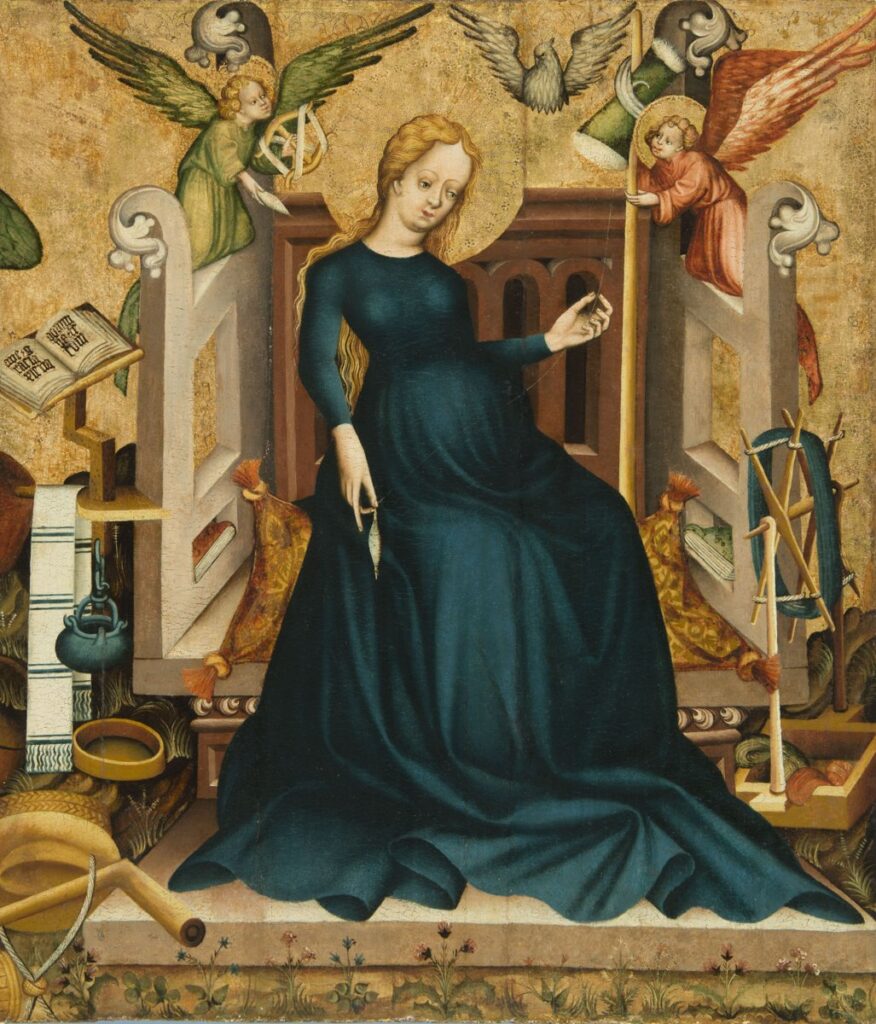Note: If you wish to receive, via e-mail, (1) my weekly newsletter or (2) daily copies of these posts, write to me at rrbates1951@gmail.com. Comments may also be sent to this address. I promise not to share your e-mail with anyone. To unsubscribe, write here as well.
Sunday
Victoria Jones at Art and Theology informs me that May is dedicated to Mary in the Roman Catholic Church, which Gerard Manley Hopkins takes as an invitation to essentially equate the mother of Jesus with the fertility of spring. While Mary’s “Magnificat” (“My soul glorifies the Lord” begins the “Canticle of Mary” in Luke 1:4-16) is normally associated with Advent, Hopkins sets his “May Magnificat” earlier in her pregnancy. After beginning his poem with a question—Why is May “Mary’s month?”—the poet goes on to answer, “Growth in every thing”:
All things rising, all things sizing
Mary sees, sympathizing
With that world of good,
Nature’s motherhood.
Here’s the poem:
The May Magnificat
By Gerard Manley Hopkins
May is Mary’s month, and I
Muse at that and wonder why:
Her feasts follow reason,
Dated due to season—
Candlemas, Lady Day;
But the Lady Month, May,
Why fasten that upon her,
With a feasting in her honor?
Is it only its being brighter
Than the most are must delight her?
Is it opportunist
And flowers finds soonest?
Ask of her, the mighty mother:
Her reply puts this other
Question: What is Spring?—
Growth in every thing—
Flesh and fleece, fur and feather,
Grass and greenworld all together;
Star-eyed strawberry-breasted
Throstle above her nested
Cluster of bugleblue eggs thin
Forms and warms the life within;
And bird and blossom swell
In sod or sheath or shell.
All things rising, all things sizing
Mary sees, sympathizing
With that world of good,
Nature’s motherhood.
Their magnifying of each its kind
With delight calls to mind
How she did in her stored
Magnify the Lord.
Well but there was more than this:
Spring’s universal bliss
Much, had much to say
To offering Mary May.
When drop-of-blood-and-foam-dapple
Bloom lights the orchard-apple
And thicket and thorp are merry
With silver-surfèd cherry
And azuring-over greybell makes
Wood banks and brakeswash wet like lakes
And magic cuckoocall
Caps, clears, and clinches all—
This ecstasy all through mothering earth
Tells Mary her mirth till Christ’s birth
To remember and exultation
In God who was her salvation.
The poem has me wondering whether “the red breasted throstle” that lays blue eggs is the “robin redbreast,” whose eggs are of the blue associated with Mary. (“Bugleblue” also signals the color of bugle weed.) The pregnant Mary is like an egg, forming and warming the life within, as all of spring’s swelling occurs within “sod or sheath or shell.” Her exultation in carrying Jesus, expressed so powerfully in Luke’s “Magnificat,” is the ecstasy that “mothering earth” experiences when spring is busting out all over.
With his reference to “the magic cuckoocall,” Hopkins may well be echoing the vibrant medieval lyric “Sumer Is Icumen In”:
Summer has arrived,
Loudly sing, cuckoo!
The seed is growing
And the meadow is blooming,
And the wood is coming into leaf now,
Sing, cuckoo!
The ewe is bleating after her lamb,
The cow is lowing after her calf;
The bullock is prancing,
The billy-goat farting,
Sing merrily, cuckoo!
Perhaps there is also an echo of the ancient “Cherry Tree Carol” in “silver-surfèd cherry.” The story has it that Jesus, speaking from within Mary’s womb, bent down a cherry tree for Mary’s plucking after an angry Joseph refused her request. (“Let the father of the baby gather cherries for thee,” is how he puts it in the Joan Baez version.”) “Thicket and thorp”–woodland and hamlet–are merry, the poet informs us, while the “azuring greybell” (bluebell) causes the “woodlands and brakeswash” (bracken) to resemble “wet like lakes.”
Hopkins exults in May and he figures that Mary must be feeling the same.
Happy Mother’s Day!


